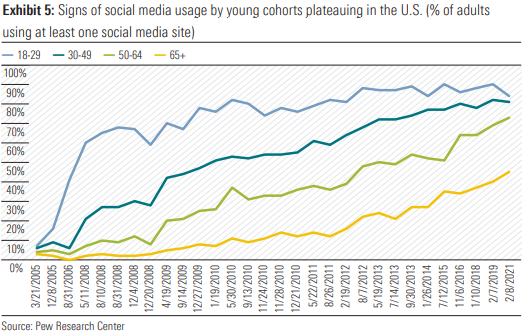The year is rapidly coming to an end. There will soon be a flurry of predictions in main and social media on what to watch out for in 2023. They are likely to encompass what to wear, for example, will tailoring be in, after two years of sloven dressing thanks to WFH? What to eat, with climate-conscious consumption set to be all the rage. And what to be outraged about, depending on whatever is trending on Twitter.
Morningstar’s Brian Han has decided to beat the crowd this year and present our own fearless predictions for 2023 … in November! Some may appear improbable, but that is why they are “fearless” rather than “timid” predictions. For the eternal optimists, there are no “get-rich-quick” ideas because those do not work. Besides, most people probably have had enough this year now the cost of real money is going up!
So, here they are, Brianstorm’s Four Fearless Predictions for 2023.
1. M&A Goes Away
If you are nursing large losses on speculative or “concept” stocks and are hoping for a white knight to buy your shares out at a premium, think again. Those speculations and concepts may have sounded great at the time, but rising interest rates are like gravity pulling them back to reality. And when stock prices are in the doldrums and the cost of money is escalating, even persuasive investment bankers cannot stop mergers and acquisition volumes from plummeting (see Exhibit 1).

Consequently, significant layoffs at investment banks look inevitable. Credit Suisse recently kickstarted the process, announcing a large scale back from deal-making, putting aside $4.6bn for restructuring purposes, raising $6.3bn to shore up the balance sheet and plans to slash its investment banking workforce. Peers are likely to follow in 2023 as they unwind the frenzied hirings of the past two years. Money has been thrown by investment banks at anyone who boasts a rolodex of executive contacts (at the senior level), who can put together PowerPoint slides (at the mid-level) and who can open up an Excel spreadsheet (at the junior level). Unfortunately, there is simply not going to be enough deals and moolah to feed all these expensive mouths in 2023.
2. Crypto Dominates Oscars, Pulitzer, Emmy and Grammy
During the American gridiron Superbowl in February 2022, a TV advertisement appeared featuring the well-known Hollywood actor Matt Damon. He was flogging Cryto.com, a cryptocurrency exchange company. The 30-second commercial with the tagline “Fortune favors the brave” probably cost around US$6.5m. In time, we are likely to look at that moment and declare that was when crypto mania reached its zenith … when fortune began to turn on the too brave.
Since then, prices of these digital tokens have collapsed (see Exhibit 2), as have exchanges such as FTX, with contagion impacts still spreading as we speak.

It is fascinating how something with no intrinsic value can be subject to such fervent speculation and interest, and lead to such unimaginable wealth transfer and destruction. Remember, these digital tokens are not “money” in the sense you can use them to buy a toaster or a car … except in certain countries or for certain “enterprises” (wink, wink). There are no central banks to maintain their purchasing power over time. There are no product disclosure statements or prospectuses to examine. And there are definitely no regulators to complain to, if you “lose” your cryptocurrency or succumb to scams in the digital wildland.
In other words, it is real lawless frontier stuff, filled with interesting characters and promoters of the Web 3.0 kind. If financials types are from Mars, these crypto people are definitely from Venus! That is perfect fodder for film makers, authors, actors and singers to cash in on in 2023. In fact, Michael Lewis, an author who seems to specialise in exposing the shenanigans and inner workings of high-testosterone industries such as technology, finance and sports, is reportedly doing just that, writing a book about the crypto industry. If Lewis’ The New New Thing, The Big Short and Moneyball are anything to go by, a blockchain of spinoffs could result, from a tentpole movie, followed by a no-expense spared Netflix TV series adaptation, to a catchy song that spawns a Broadway play.
As for any contrarians tempted to wade into the cryptocurrencies at current levels, just be clear about your motivation for doing so. Do not kid yourself that they are “investments”. Rather, be upfront about the fact that you are speculating and adjust your risk-reward expectations appropriately.
3. Cyber Security Surges to Top of Shareholders Minds
The public underestimates just how much information it gives up online. Most people mindlessly scroll through the fine prints about privacy and data in the digital world. Who has the time to read all that legalese when there is an urgent need to buy that plane ticket to Hawaii, “like” that post in Instagram, search for that new smart device or sign up to that loyalty program to get a free coffee machine? Even when you are careful and provide your confidential and personal information only to essential services sites, they can still get compromised. In fact, around 50% of cyber security incidents occur in sectors that hold the most sensitive information on its customers, namely, government, health, financial and utility (see Exhibit 3).

During the financial year ended June 2022, over 76,000 cybercrime reports were reported, an increase of 13% from the previous year, equating to one every 7 minutes, according to ReportCyber. That is not even counting those not reported because of embarrassment or apathy. And all this is before the proverbial really hit the fan recently, with compromised Optus and Medibank customer data raining down like confetti in cyberspace.
This is just the tip of the iceberg. We believe 2023 is likely the year when cybercrime jostles with climate change as the numero uno concern for society. This is likely to lead to increasing shareholder scrutiny on: how public companies safeguard their customer data, what data are being collected and why, how many “serious” security breaches occurred over a period, what contingency plans are in place in the event of a cyber security breach and what the cost of all this will be, whether in technology investment, consultant fees or regulatory compliance. And, trust us, regulatory oversight will be intense. Nothing galvanises politicians and bureaucrats more intensely than angry mobs looking for people to blame!
As Morningstar ESG analyst Emma Williams recently pointed out: “Data breaches are high-profile impacts of data privacy and security risk, but impacts extend far beyond this, including regulatory and societal scrutiny of controversial or unlawful use, or disclosure of data (see Data Privacy and Security Risk – Beyond breaches: why this dynamic ESG issue should be on your radar, published 27 June 2022). She proceeds to identify telecommunication services, insurance brokers, and internet software and services sectors as most exposed to this risk.
4. Backlash Against Digital Tech and Resurgence of Dumb Tech
Increasing concerns about cyber security and privacy are likely to lead to a backlash against social media and technology in 2023. That movement is likely to be fuelled further by other downsides of technology usage, ills that are readily observable especially among the younger demographics (see Exhibit 4). Viewed through that prism, perhaps Elon Musk is doing is all a favour by taking over Twitter and making it a niche platform for just those who like the sound of their own voice!

Granted, older demographics are embracing social media in greater numbers. With all due respect to this cohort, however, their online behaviours do not usually set future trends in the digital space. What is important is social media usage among younger people is plateauing, with the 18-29 age group even showing a decline in recent periods, at least in the US. (see Exhibit 5).

Furthermore, if environment concerns are such a big deal with popular conscience, why is the damage caused by technology not publicised as extensively? Have the ESG zealots ever sat down and really thought about the amount of resources (mining for materials used to make technology products), energy (expended for the materials mining and production of technology products), carbon footprint and e-waste that go into all the billions of smartphones, laptops and smart devices that humans use?
We believe people will be increasingly conscious of these negative consequences of technology in 2023. A fallout from this could be the return of old-school, dumb technology. Basic mobile phones with just phone, text, GPS could be a retro hot item in the coming year (check out Nokia 2760 flip phone for just $130). Snail mail could make a comeback, with letters and postcards written in full English sentences, instead of lols, omgs and ngls. And perhaps we will even revert to meeting family, friends and business partners face-to-face, appreciating the nuances of eye contact, body language and emotional connection
Written by Brian Han, senior equity analyst in the equity research team at Morningstar. 24 November 2022

Recent Comments